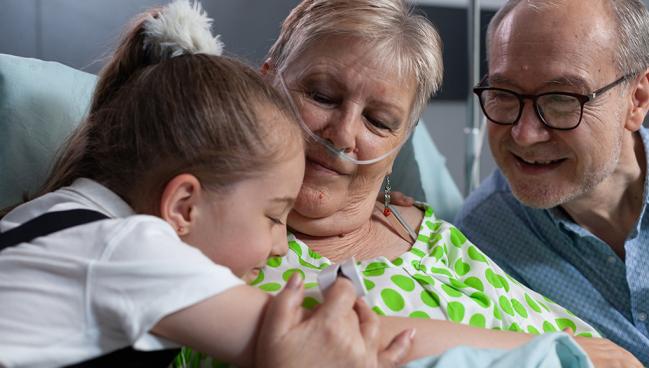Cardiac Surgeons Issue ‘Call to Action’ to Improve CABG Outcomes in Women
By nearly every metric, women fare worse than men after CABG surgery—that needs to change, and can, say experts.

Speaking at the European Association for Cardio-Thoracic Surgery (EACTS) annual meeting, Rashmi Yadav, MBBS, PhD (Royal Brompton Hospitals, London, England), reminded her audience that “women are not simply small men” and highlighted the myriad ways the community is failing female patients.
“Women are more likely to die, more likely to have worse outcomes, and more likely to have an infection compared with men in coronary surgery,” she said.
Referring to recent findings from a Lancet commission aimed at reducing the global burden of cardiovascular disease in women, Yadav pointed out that 35% of all deaths in women are from cardiovascular diseases. Quoting the commission, Yadav reminded the audience that cardiovascular disease remains “understudied, underrecognized, underdiagnosed, undertreated, and women are underrepresented in clinical trials.”
In fact, research suggests that the representation of women in CVD trials is declining. In one study, women made up just 20% of participants, but their percentage declined from a high of 29% in 2000 to 13% in 2019.
“There is this real, global data gap in cardiovascular disease in women and the first step to address this and improve the outcomes of coronary surgery in women is research,” said Yadav.
One trial that may close the research gap is ROMA-Women. Mario Gaudino, MD, PhD (Weill Cornell Medicine, New York, NY), one of the principal investigators, said that while there are observational data to support multiarterial grafting over a single arterial graft, this is being put to the test in a randomized trial in the 4,000-patient ROMA trial. Moreover, it remains possible the treatment effect may vary by sex. However, with only a minority of female patients (approximately 15%), ROMA, which has completed enrollment, would be unable to detect meaningful differences between men and women.
Given that concern, investigators took advantage of existing site infrastructure and launched ROMA-Women. Speaking in the EACTS session, Gaudino provided an update on the trial’s progress, noting it recently gained support from the Global Cardiovascular Research Funding Forum, an international consortium of funders for investigator-led multinational trials. To date, the trial has enrolled more than 200 out of a planned 1,300 patients—not including the roughly 700 female participants in ROMA who will be rolled into ROMA-Women—since the trial launched 3 months ago.
That pace of enrollment is “better than expected,” said Gaudino. “If we keep this pace, we can make this impossible trial possible.”
Bleaker Picture Before and After CABG
Cardiac surgeon Sigrid Sander, MD (Medical University of Vienna, Austria), also speaking at the EACTS meeting, painted a bleak landscape.
“When we talk about disparities in outcomes in CABG between women and men, we need to recognize that in the treatment of coronary disease, there is a disparity every step [of the] way—preoperative to postoperative—that contributes to these differences in outcomes,” said Sander.
Women are diagnosed with CAD later than men and are referred later for surgery, at which point they have a larger burden of comorbidities, “all of which contributes to greater baseline risk,” she said. Additionally, women are less likely to be treated with guideline-recommended revascularization techniques, including left internal mammary artery (LIMA) grafting to the LAD, multiarterial grafting, and complete anatomic revascularization. Intraoperatively, women are more likely to experience anemia and are less likely to receive guideline-recommended secondary prevention medications upon discharge, including referrals to cardiac rehabilitation.
“All of this translates into disparities in outcomes,” said Sander. “The majority of the evidence shows that women generally do worse in every measurable outcome.”
In one analysis of more than 1.3 million people undergoing primary isolated CABG between 2011 and 2020, women had higher unadjusted operative mortality and morbidity compared with men every single year. The operative mortality risk attributable to female sex—which is on top of baseline risk—varied from 1.28 to 1.41, with no change over time.
There is this real, durable data gap in women and the first step to address this and improve the outcomes of women is research. Rashmi Yadav
In study after study, Sander showed that women fare worse than men. They have higher risks of graft failure and hospital readmissions, both of which correlate with more clinical events, including MI, revascularization, and mortality. The difference in MACE between men and women after surgery does appear to narrow as patients age, she said, noting one study showed outcomes were similar in patients 75 years and older.
“I think this is related to the different presentation pattern of coronary artery disease, not only between women and men, but also between younger women and those at an older age,” she said. “Younger women frequently present with diffuse disease, which is less amenable to revascularization, whereas older women tend to present with the typical obstructive, epicardial coronary artery disease, which is what we see in men and what we treat very well.”
Bringing Everything to the Table
Speakers in the “call to action” session pointed to keyanatomic and physiological differences that might explain why women fare worse with surgery. They have smaller coronary arteries, even after accounting for body mass index and left ventricular size, smaller conduits, and narrower sternums that make the procedure more technically demanding. The pericardial cavity can also be considerably smaller, an issue when several chest drains are inserted, with the potential to compress the right ventricle when the sternum is closed. Additionally, female sex carries an increased risk of sternal wound infection.
Yadav believes having surgeons who specialize in female CABG patients might go a long way toward improving outcomes.
“Coronary bypass surgery is called a routine operation, but it's far from routine,” Yadav told TCTMD. “It is, perhaps, one of the more technically demanding operations in cardiac surgery. My view is that people who want to operate on difficult or challenging coronary anatomy, or on particular subsets of patients, such as those with diabetes where there are diffusely diseased vessels, or women patients, then they should commit themselves to it. These challenging areas of coronary surgery should be identified as an area of subspecialist expertise.”
She emphasized the need for meticulous attention to detail when operating on females. “I’m always more alert. I make sure my team are more aware.”
There’s also evidence that female patients are more sensitive to bedside manner, she said, with women more perceptive to an absence of empathy from their surgeon compared with male patients. “If the patient is afraid or if they’re not sure whether they want surgery, this might make the difference between them accepting or declining an operation that would help them live a longer, symptom-free life,” said Yadav. Shared backgrounds, being able to speak their language, guiding them empathetically through difficult decision-making processes—all of this factors into optimizing care for patients, she said.
“You have to bring everything to the table,” she said.
Jennifer Lawton, MD (Johns Hopkins Medicine, Baltimore, MD), who chaired the new American College of Cardiology and American Heart Association (ACC/AHA) revascularization guidelines, said that while surgeons await results from ROMA and ROMA-Women, there are things they can do to make sure women are primed for the best possible outcome after surgery.
And while ROMA-Women will provide more details, there are some data to support multiarterial grafting in women to improve survival and reduce MACCE. So, for now, “this is something we, as surgeons, can do,” said Lawton.
Both the ACC/AHA and European guidelines recommend the LIMA-to-LAD graft, as well as bilateral internal mammary artery (BIMA) grafting in appropriate patients, but the American version includes a provision stating that all treatment decisions around coronary revascularization should be based on clinical indication, “regardless of sex, race, or ethnicity” (class I recommendation). In her own practice, Lawton said she didn’t always give the same types of grafts to every patient, but now she approaches every surgery with the aim of performing a BIMA graft and radial artery graft unless contraindicated.
Overall, closing the treating gap isn’t insurmountable, said Yadav. “When you start to watch and study something, the results will improve,” she said.
Michael O’Riordan is the Managing Editor for TCTMD. He completed his undergraduate degrees at Queen’s University in Kingston, ON, and…
Read Full BioSources
Multiple presentations. Improving CABG outcomes in women: a call to action. Presented at: EACTS 2023. October 5, 2023. Vienna, Austria.
Disclosures
- None of the speakers report any relevant conflicts of interest.





Comments